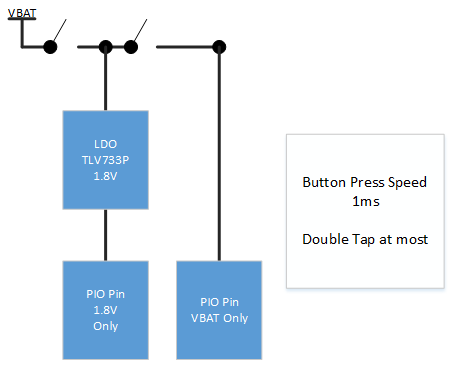Hello,
I have a question about the LDO can it be used to run a mechanical switch button to operate at a regulated voltage level?
The reason being is that I have a limited space (2mm x 2mm) and one of the PIO require voltage levels to be 1.8V.
The button would be pressed quite a few times a day (estimate about 200 times a day)
So the LDO would be switched on and off at least 200 times a day as well, would this be ok for this LDO or having the LDO switching on and off this many times would damage the chip?
I have put an image where the LDO will go


